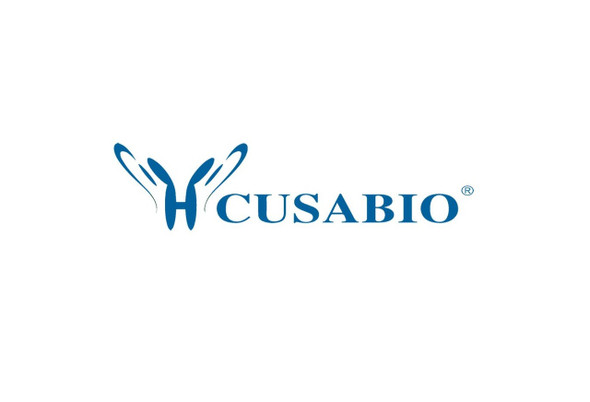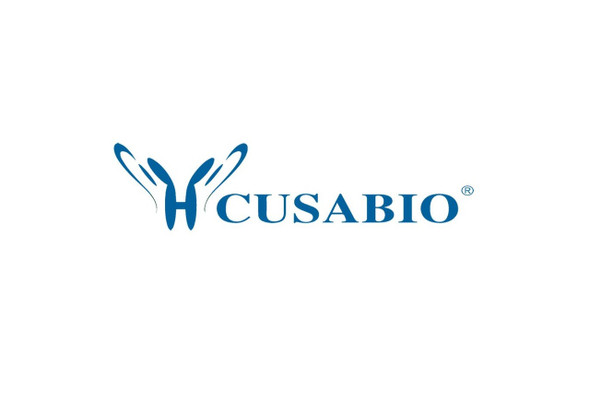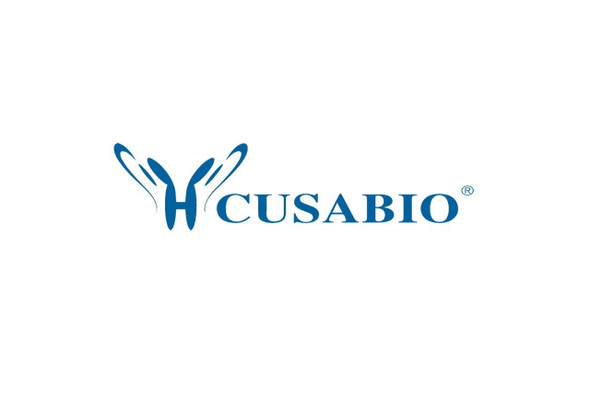Cusabio Human Recombinants
Recombinant Human Potassium voltage-gated channel subfamily A member 1 protein (KCNA1), partial | CSB-EP012005HU
- SKU:
- CSB-EP012005HU
- Availability:
- 13 - 23 Working Days
Description
Recombinant Human Potassium voltage-gated channel subfamily A member 1 protein (KCNA1), partial | CSB-EP012005HU | Cusabio
Alternative Name(s): Voltage-gated K(+) channel HuKI1
Gene Names: KCNA1
Research Areas: Neuroscience
Organism: Homo sapiens (Human)
AA Sequence: MTVMSGENVDEASAAPGHPQDGSYPRQADHDDHECCERVVINISGLRFETQLKTLAQFPNTLLGNPKKRMRYFDPLRNEYFFDRNRPSFDAILYYYQSGGRLRRPVNVPLDMFSEEIKFYELGEEAMEKFREDEGFIKEEERPLPEKEYQRQVW
Source: E.coli
Tag Info: N-terminal 6xHis-tagged
Expression Region: 1-154aa
Sequence Info: Partial
MW: 22.2 kDa
Purity: Greater than 90% as determined by SDS-PAGE.
Relevance: Voltage-gated potassium channel that mediates transmbrane potassium transport in excitable mbranes, primarily in the brain and the central nervous syst, but also in the kidney . Contributes to the regulation of the mbrane potential and nerve signaling, and prevents neuronal hyperexcitability . Forms tetrameric potassium-selective channels through which potassium ions pass in accordance with their electrochical gradient. The channel alternates between opened and closed conformations in response to the voltage difference across the mbrane . Can form functional homotetrameric channels and heterotetrameric channels that contain variable proportions of KCNA1, KCNA2, KCNA4, KCNA5, KCNA6, KCNA7, and possibly other family mbers as well; channel properties depend on the type of alpha subunits that are part of the channel . Channel properties are modulated by Cytoplasmic domain beta subunits that regulate the subcellular location of the alpha subunits and promote rapid inactivation of delayed rectifier potassium channels . In vivo, mbranes probably contain a mixture of heteromeric potassium channel complexes, making it difficult to assign currents observed in intact tissues to any particular potassium channel family mber. Homotetrameric KCNA1 forms a delayed-rectifier potassium channel that opens in response to mbrane depolarization, followed by slow spontaneous channel closure . In contrast, a heterotetrameric channel formed by KCNA1 and KCNA4 shows rapid inactivation . Regulates neuronal excitability in hippocampus, especially in mossy fibers and medial perforant path axons, preventing neuronal hyperexcitability. Response to toxins that are selective for KCNA1, respectively for KCNA2, suggests that heteromeric potassium channels composed of both KCNA1 and KCNA2 play a role in pacaking and regulate the output of deep cerebellar nuclear neurons . May function as down-stream effector for G protein-coupled receptors and inhibit GABAergic inputs to basolateral amygdala neurons . May contribute to the regulation of neurotransmitter release, such as gamma-aminobutyric acid (GABA) release . Plays a role in regulating the generation of action potentials and preventing hyperexcitability in myelinated axons of the vagus nerve, and thereby contributes to the regulation of heart contraction . Required for normal neuromuscular responses . Regulates the frequency of neuronal action potential firing in response to mechanical stimuli, and plays a role in the perception of pain caused by mechanical stimuli, but does not play a role in the perception of pain due to heat stimuli . Required for normal responses to auditory stimuli and precise location of sound sources, but not for sound perception . The use of toxins that block specific channels suggest that it contributes to the regulation of the axonal release of the neurotransmitter dopamine . Required for normal postnatal brain development and normal proliferation of neuronal precursor cells in the brain . Plays a role in the reabsorption of Mg2+ in the distal convoluted tubules in the kidney and in magnesium ion homeostasis, probably via its effect on the mbrane potential .
Reference: The finished DNA sequence of human chromosome 12.Scherer S.E., Muzny D.M., Buhay C.J., Chen R., Cree A., Ding Y., Dugan-Rocha S., Gill R., Gunaratne P., Harris R.A., Hawes A.C., Hernandez J., Hodgson A.V., Hume J., Jackson A., Khan Z.M., Kovar-Smith C., Lewis L.R. , Lozado R.J., Metzker M.L., Milosavljevic A., Miner G.R., Montgomery K.T., Morgan M.B., Nazareth L.V., Scott G., Sodergren E., Song X.-Z., Steffen D., Lovering R.C., Wheeler D.A., Worley K.C., Yuan Y., Zhang Z., Adams C.Q., Ansari-Lari M.A., Ayele M., Brown M.J., Chen G., Chen Z., Clerc-Blankenburg K.P., Davis C., Delgado O., Dinh H.H., Draper H., Gonzalez-Garay M.L., Havlak P., Jackson L.R., Jacob L.S., Kelly S.H., Li L., Li Z., Liu J., Liu W., Lu J., Maheshwari M., Nguyen B.-V., Okwuonu G.O., Pasternak S., Perez L.M., Plopper F.J.H., Santibanez J., Shen H., Tabor P.E., Verduzco D., Waldron L., Wang Q., Williams G.A., Zhang J., Zhou J., Allen C.C., Amin A.G., Anyalebechi V., Bailey M., Barbaria J.A., Bimage K.E., Bryant N.P., Burch P.E., Burkett C.E., Burrell K.L., Calderon E., Cardenas V., Carter K., Casias K., Cavazos I., Cavazos S.R., Ceasar H., Chacko J., Chan S.N., Chavez D., Christopoulos C., Chu J., Cockrell R., Cox C.D., Dang M., Dathorne S.R., David R., Davis C.M., Davy-Carroll L., Deshazo D.R., Donlin J.E., D'Souza L., Eaves K.A., Egan A., Emery-Cohen A.J., Escotto M., Flagg N., Forbes L.D., Gabisi A.M., Garza M., Hamilton C., Henderson N., Hernandez O., Hines S., Hogues M.E., Huang M., Idlebird D.G., Johnson R., Jolivet A., Jones S., Kagan R., King L.M., Leal B., Lebow H., Lee S., LeVan J.M., Lewis L.C., London P., Lorensuhewa L.M., Loulseged H., Lovett D.A., Lucier A., Lucier R.L., Ma J., Madu R.C., Mapua P., Martindale A.D., Martinez E., Massey E., Mawhiney S., Meador M.G., Mendez S., Mercado C., Mercado I.C., Merritt C.E., Miner Z.L., Minja E., Mitchell T., Mohabbat F., Mohabbat K., Montgomery B., Moore N., Morris S., Munidasa M., Ngo R.N., Nguyen N.B., Nickerson E., Nwaokelemeh O.O., Nwokenkwo S., Obregon M., Oguh M., Oragunye N., Oviedo R.J., Parish B.J., Parker D.N., Parrish J., Parks K.L., Paul H.A., Payton B.A., Perez A., Perrin W., Pickens A., Primus E.L., Pu L.-L., Puazo M., Quiles M.M., Quiroz J.B., Rabata D., Reeves K., Ruiz S.J., Shao H., Sisson I., Sonaike T., Sorelle R.P., Sutton A.E., Svatek A.F., Svetz L.A., Tamerisa K.S., Taylor T.R., Teague B., Thomas N., Thorn R.D., Trejos Z.Y., Trevino B.K., Ukegbu O.N., Urban J.B., Vasquez L.I., Vera V.A., Villasana D.M., Wang L., Ward-Moore S., Warren J.T., Wei X., White F., Williamson A.L., Wleczyk R., Wooden H.S., Wooden S.H., Yen J., Yoon L., Yoon V., Zorrilla S.E., Nelson D., Kucherlapati R., Weinstock G., Gibbs R.A.Nature 440:346-351(2006)
Storage: The shelf life is related to many factors, storage state, buffer ingredients, storage temperature and the stability of the protein itself. Generally, the shelf life of liquid form is 6 months at -20?/-80?. The shelf life of lyophilized form is 12 months at -20?/-80?.
Notes: Repeated freezing and thawing is not recommended. Store working aliquots at 4? for up to one week.
Function: Voltage-gated potassium channel that mediates transmembrane potassium transport in excitable membranes, primarily in the brain and the central nervous system, but also in the kidney
Involvement in disease: Episodic ataxia 1 (EA1); Myokymia isolated 1 (MK1)
Subcellular Location: Cell membrane, Multi-pass membrane protein, Membrane, Cell projection, axon, Cytoplasmic vesicle, Perikaryon, Endoplasmic reticulum, Cell projection, dendrite, Cell junction, Cell junction, synapse, Cell junction, synapse, presynaptic cell membrane
Protein Families: Potassium channel family, A (Shaker) (TC 1.A.1.2) subfamily, Kv1.1/KCNA1 sub-subfamily
Tissue Specificity: Detected adjacent to nodes of Ranvier in juxtaparanodal zones in spinal cord nerve fibers, but also in paranodal regions in some myelinated spinal cord axons (at protein level) (PubMed:11086297). Detected in the islet of Langerhans (PubMed:21483673).
Paythway:
Form: Liquid or Lyophilized powder
Buffer: If the delivery form is liquid, the default storage buffer is Tris/PBS-based buffer, 5%-50% glycerol. If the delivery form is lyophilized powder, the buffer before lyophilization is Tris/PBS-based buffer, 6% Trehalose, pH 8.0.
Reconstitution: We recommend that this vial be briefly centrifuged prior to opening to bring the contents to the bottom. Please reconstitute protein in deionized sterile water to a concentration of 0.1-1.0 mg/mL.We recommend to add 5-50% of glycerol (final concentration) and aliquot for long-term storage at -20?/-80?. Our default final concentration of glycerol is 50%. Customers could use it as reference.
Uniprot ID: Q09470
HGNC Database Link: HGNC
UniGene Database Link: UniGene
KEGG Database Link: KEGG
STRING Database Link: STRING
OMIM Database Link: OMIM









